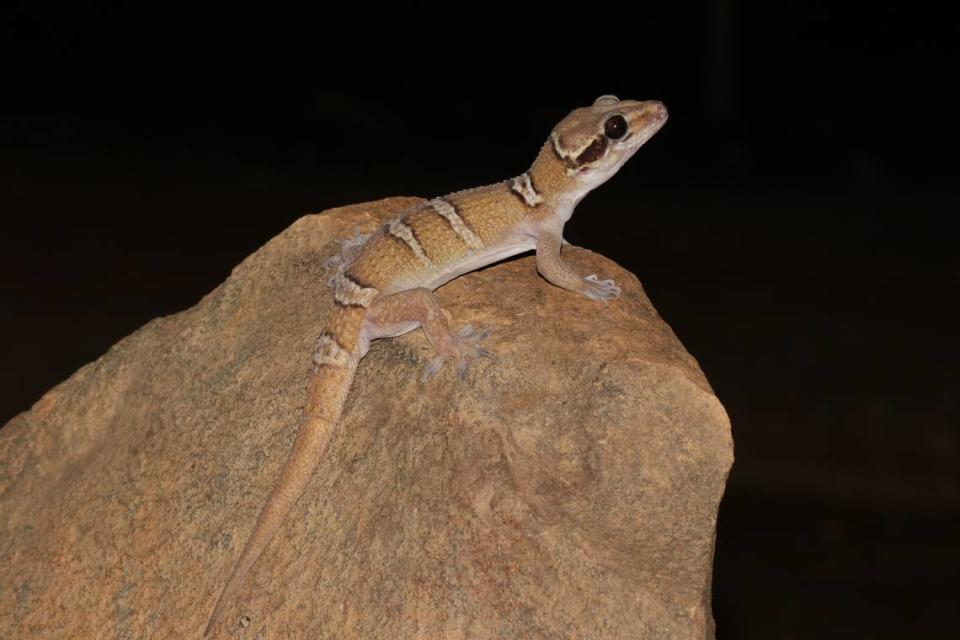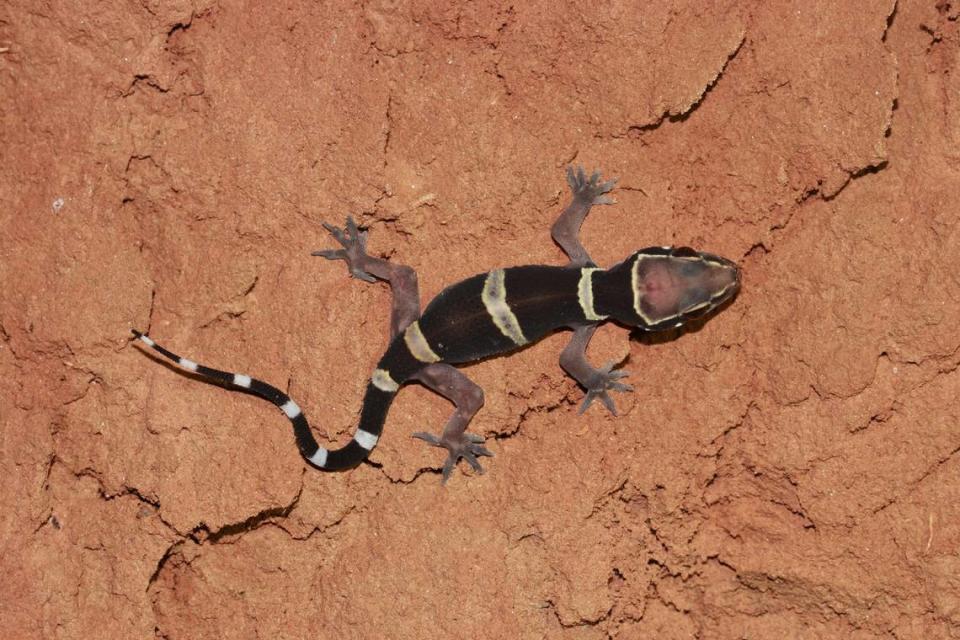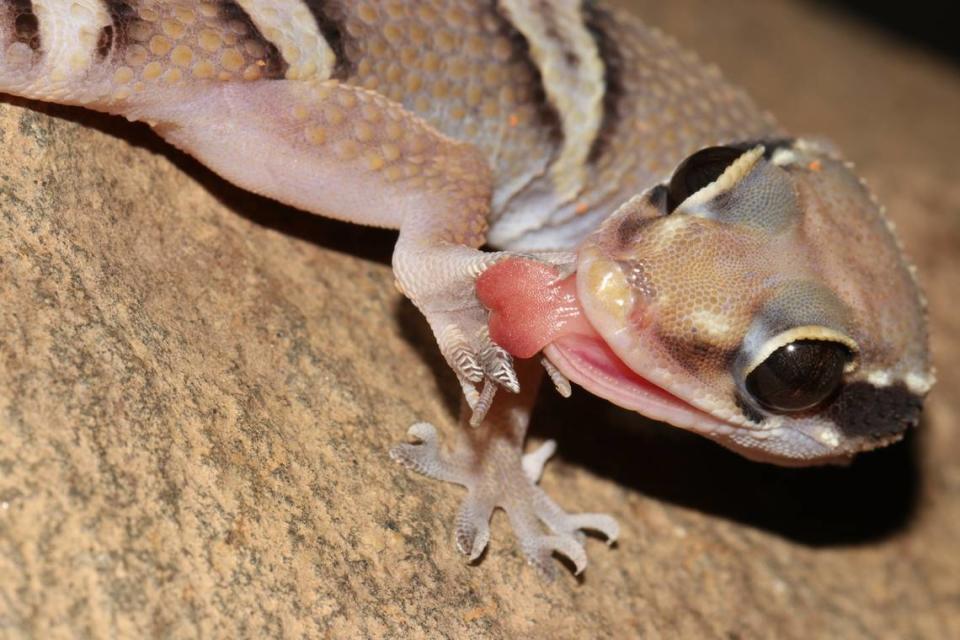Spiky creature — a new species — shed its skin trying to escape grasp of scientists
Crawling along rocks and remote buildings, a spiky creature stayed hidden in an Indian forest. The elusive reptile was spotted occasionally but never identified — until now.
Researchers ventured into the forests of Odisha in search of the “unique” lizard, according to a study published June 12 in the journal Zootaxa. They followed reports of earlier scientists who had encountered the animal but failed to capture it.
While searching a temple in Anandapur, researchers spotted the lizard, the study said. The spiky creature tried to escape, shedding its skin in the process, but was unsuccessful.
Researchers collected several lizards and, after taking a closer look, realized they had discovered a new species, the study said.
The new species was named Hemidactylus paucifasciatus, or the few-banded termite hill gecko, researchers said. The “large” gecko can reach about 4.6 inches in size and has rows of spiky bumps running along its body.
The few-banded termite hill gecko has a “distinctive” color pattern, the study said. Photos show its “rusty-brown” coloring with several “bands” running horizontally across its back. The new species varied in coloring, ranging from a lighter almost creamish hue to a shade of darker brown-black, photos show.

Researchers named new species after its identifiable bands. “Paucifasciatus” is a combination of the Latin words “pauci” meaning “few” and “fasciatus” meaning “banded.”

The new species was recognized as morphologically distinct based on its size, coloring and pattern of spikes, the study said.
DNA analysis found the new species had about 16% to over 21% genetic divergence from other known gecko species, researchers said.
The few-banded termite hill gecko was found on trees, rocks, houses in remote forest villages, “infrequently used” visitor cabins at a wildlife sanctuary and a temple, the study said. Still, the lizard preferred “valleys and low-lying hills.”

The gecko was seen eating insects, typically “moths, crickets, cockroaches, termites and beetles.” The species shed its skin, especially the skin on its head, as a defensive mechanism when scientists grabbed it.
The few-banded termite hill gecko was found across the Chota Nagpur Plateau in northern Odisha, an area about 880 miles southeast of New Delhi, the study said. The new species is the area’s first endemic gecko.
Researchers noted that neighboring regions need to be surveyed to assess the species’ full range. Animals in this area have been “poorly studied,” researchers said.
The research team included Pratyush Mohapatra, Ishan Agarwal, Rakesh Kumar Mohalik, Sushil Dutta and Akshay Khandekar.
Freaky-looking goblin shark caught by fisherman in Taiwan. See the record-breaker
‘Territorial’ creature found near swampy water is discovered as new species in Amazon
‘Secretive’ creature found slithering in mountains at night is undiscovered species

